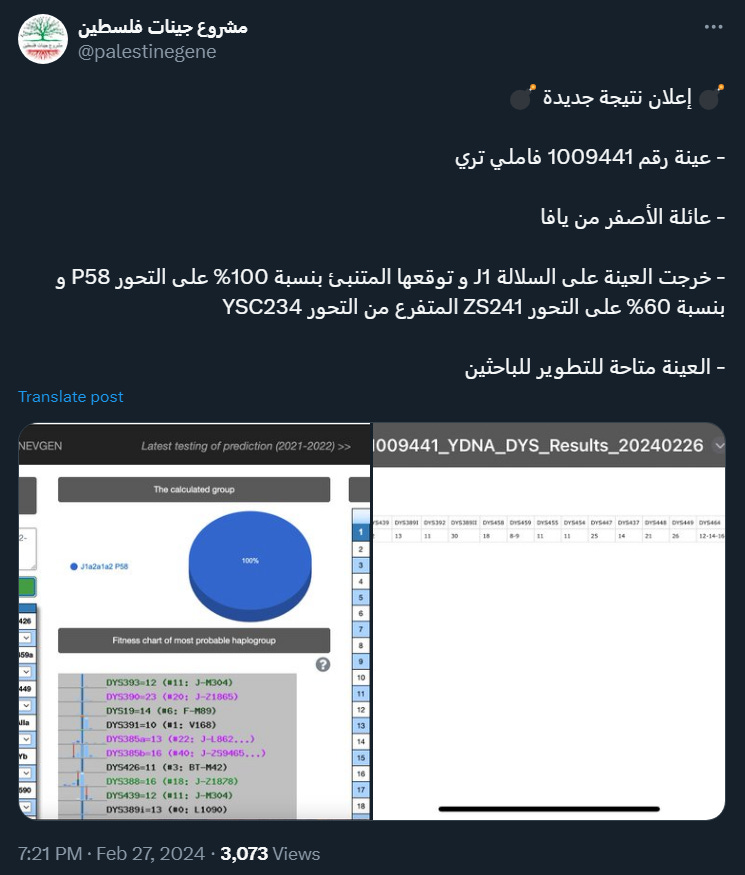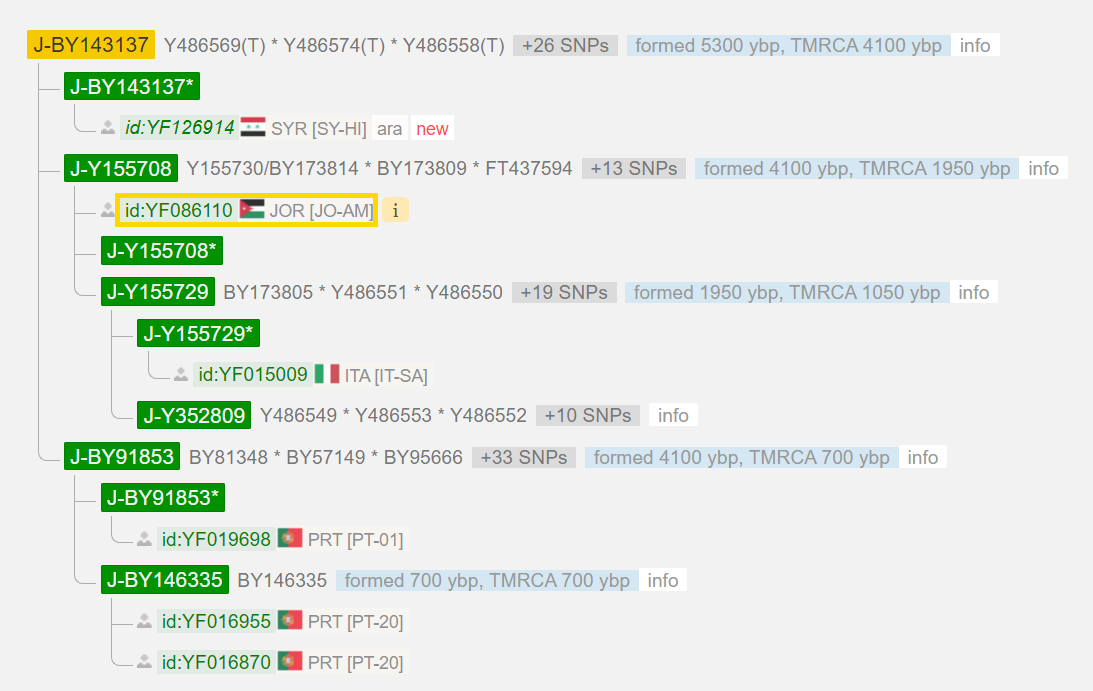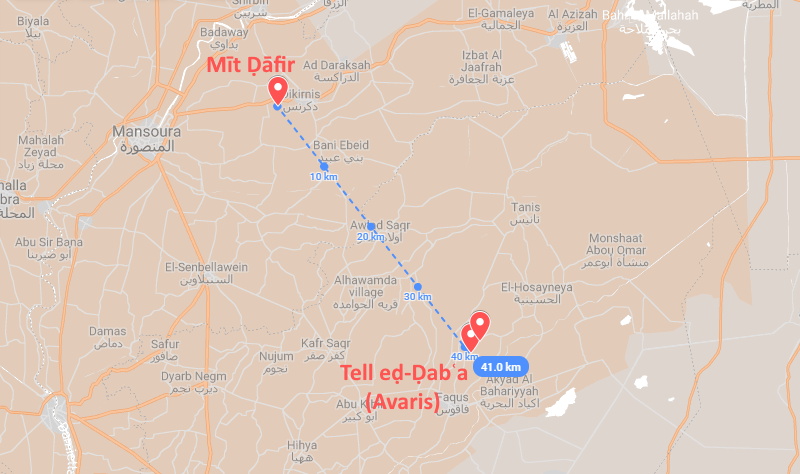While my posts on Palestinian Arab ancestry have tended to focus on the Arabian component present among them (which is being downplayed for political reasons), another prominent component that is overlooked in the anti-Israel activists’ perpetual quest to max out Canaanite ancestry among the Palestinian Arabs is the Egyptian one.
In my last article I highlighted how Ancestralbrew’s models reduced not only the Arabian component but the Egyptian one as well to the bare minimum (reaching a maximum of about 10%). In the meantime I’ve had access some of the averages for which models were produced in that video, and I can confirm that from the fits I obtained the portion of Egyptian ancestry is much closer to ~25% with a clear increase in that type of admixture from north to south (Gaza scores the highest amount of Egyptian, around 40%, essentially making Egypt the primary source of ancestry).
All by themselves however, a handful of fits (even if obtained from a fairly solid model) do not mean all that much unless there is additional evidence supplementing the results as one could still make the argument that something else is being picked up or that this is chance resemblance as should be expected for neighbouring populations.
One issue here is that unlike Peninsular Arabs (who are oversampled), Egyptians remain severely undersampled to this day and it is therefore significantly harder to support such models using uniparental or even IBD data. Speaking of uniparental data, an example of this are the lines under E-V22, this is bound to have been a major marker in Lower Egypt since prehistorical times, for instance among Palestinian Arabs we have the Priestly Samaritan branch E-FT161981 which comprises a large Nabulsi cluster under Y270751 and there is no reason to doubt that this branch indeed has its roots in Samaritan Levites and was extant in Iron Age Israel in turn making it firmly local (even though I would argue that FGC62854, from which this branch stems, ultimately is of Egyptian origin). There is a similar amount of uncertainty when dealing with the lines under E-V12 which should be the main Upper Egyptian marker.
One could also make an argument from silence and point out that M78’s branches remain elusive in the Iron Age and Bronze Age datasets from the Levant, but this is an argument based on negative evidence and the current sample count does not really allow us to draw such conclusions (I am even reluctant to use that kind of logic for areas for which we have a large amount of ancient samples, such as the British Isles or Hungary). Absence of evidence is not evidence of absence.
In such circumstances, one might find the endeavour utterly pointless… And yet, a recent Palestinian Arab sample might turn the tables in a surprising manner:
This tweet from the Palestine DNA Project announces the results of FTDNA kit n°1009441, belonging to a member of the Al-Asfar family from Jaffa. This individual is J1-ZS241, the same branch I spoke of in the last post and which was found in an Iron Age sample from Megiddo.
Nevgen predicts the SNP as being Z18271, which would make it a priestly line therefore Israelite by definition. Looking more closely at the STRs, this is based on three values only one of which is reliable (DYS448=21). In other words this sample might still be xZS227.
So why am I bringing this up? First of all, this isn’t our first ZS241/Y3081 sample from Jaffa, we already have a YSEQ kit with paternal roots in Jaffa (lists country of origin as Jordan):
Secondly, the family’s origin itself. While the Al-Asfar family has roots in Jaffa, it migrated there from Shweika (a suburb of Tulkarm), and more to the point the family’s earliest known paternal ancestor was an Egyptian officer who arrived with Ibrahim Pasha’s army in the 1830s and settled in Tulkarm, this officer came from Mansoura in Egypt’s Eastern Delta.
These are all crucial details because BY143137 (the branch carried by the other individual from Jaffa), despite being quite rare, has at least three modern testers hailing from that same part of Egypt, with roots in towns and villages in Mansoura’s vicinity such as Mit Dafir.
This area is also where the 15th Dynasty of Egypt (the so-called “Hyksos”), which was of Amorite origin, established its capital Avaris and it is quite likely that BY143137 arrived in the area during the Middle Bronze Age with “Asiatic” migrants considering that ZS241 was found in a MBA sample from Megiddo, a site which shared the same material culture as Avaris.
I do not believe in coincidences, and this is a bit too much to be mere coincidence, while I could be wrong I’m enclined to trust the family’s genealogy. I would say the odds are in favour of this sample being BY143137 as well. Even if I am mistaken and the Al-Asfar family is Z18271, this still puts the presence of BY143137 in Jaffa under a new light, indeed the coastal plain of what is now Israel was heavily settled by Egyptian migrants following Ibrahim Pasha’s campaigns in the Levant.
The major series of Egyptian migration waves are associated with the time of Muhammad Ali’s Syrian campaign. The original wave took place in 1829, about two years before the invasions, and ended in early 1841, with the forced retreat of the Egyptian army.5 The historical circumstances that brought about the Egyptian migrations are presented briefly below. The migrations had profound demographic and socioeconomic impacts. They contributed to a population increase that more than counterbalanced the loss of life caused by the harsh rule of the Egyptians.
The Egyptian invasion was caused, at least partly, when the ruler of Syria and Palestine refused to obey Muhammad Ali’s demand to repatriate the Egyptians who had escaped from the forced labor projects in the Nile Delta. But, ironically, the regime’s later Syrian-Palestinian development projects were accompanied by the import of Egyptian forced labor into the conquered land. The termination of Muhammad Ali’s Syrian administration resulted in another wave of Egyptian migrants. The demographic impacts of Egyptian rule in Palestine occurred thus during the period that preceded it (1829), during the period of its administrative control (1832-1839), and during its termination phase (1840-41).
[…]
At any rate, the Egyptian population that remained in Palestine after the retreat of the army made up the largest migration that the country had known during the nineteenth century. One of the contributions of this wave was the emergence of Jaffa and its rural hinterland, although the new neighborhoods that they established were mostly slums, built of adobe bricks and other unsorted, locally available materials.
-David Grossman, Rural Arab Demography and Early Jewish Settlement in Palestine; p. 45-46 (2011)
Even though it isn’t easy to quantify the waves Egyptian settlers in raw numbers, in large part because of the tumultuous era and lack of accurate data, those facts are nevertheless well known to Palestinian Arab genealogists, for instance this is what Hazem Bakri (himself a genealogist) has to say about the Egyptian input in the area (translation is my own):
Obviously, this is the kind of information the “Palestinians = Arabised Canaanites” crowd would much rather not have you know anything about, but I digress.
The point here is that this Palestinian Arab line, under a branch which is currently ~90% Jewish and was present in the Levant amongst the earliest Northwest Semitic-speaking groups replete with ancient samples to support this and for which a local origin going back to the Early Bronze Age should be totally uncontroversial, might well be of Egyptian origin for millennia all the way back to the Middle Bronze Age and have made its way back to the Levant only in the 19th century (after ~3600 year-long stay in Egypt).
If an Egyptian pedigree can be expected for one of the few salient pre-Arab lines found in Palestinian Arabs, the possibility of a significantly more recent arrival for other lines via Egypt must always be kept in mind, for instance some of the lines under J-FGC1722 which are ostensibly Arabian might also have been mediated by later Egyptian arrivals and might therefore be Peninsular up to a certain point in time (to say nothing of the branches of E-V22, E-V12, E-V32 and so on).
It is likely we are merely scratching the surface here and that without further sampling from Egypt we are just looking at the tip of the proverbial iceberg.
EDIT: Josh has informed me in the comments that the Al-Asfar sample has a GD of 3-4 with two J-BY55414 individuals, in this case Z18271 should be a foregone conclusion (and not BY143137, though the point regarding this marker still stands for the singleton). The question then becomes whether an Egyptian Jewish origin via FT157560 is to be expected, or whether we’re dealing with something different and more remote in time (the Southern Delta was home to a Jewish Temple in Leontopolis in Second Temple times, so this need not be a recent exit either).









Hey Aga, love what you’ve been writing. Just wanted to let you know, independent of the announcement on Twitter, I just stumbled upon the Alasfar sample in match lists for 2 members of J-BY55414, at GD 3-4 at Y37. Correct me if I’m wrong, but I’ve never seen xZS222 people match ZS222 members at that GD threshold. It might be chancey to assume a specific ID with BY55414, but I’m inclined to believe this is a case of Z18271.
Great read as always- thanks!!
I have a question about another topic. There is a new Jewish sample in J-Y3087 (YFull) . I wonder if the new Jewish sample means anything about the overall CMH, even though the connection is prehistoric according to YFull dates.
One thing to note is that it is a new sample, it is unclear if they will remain basal.